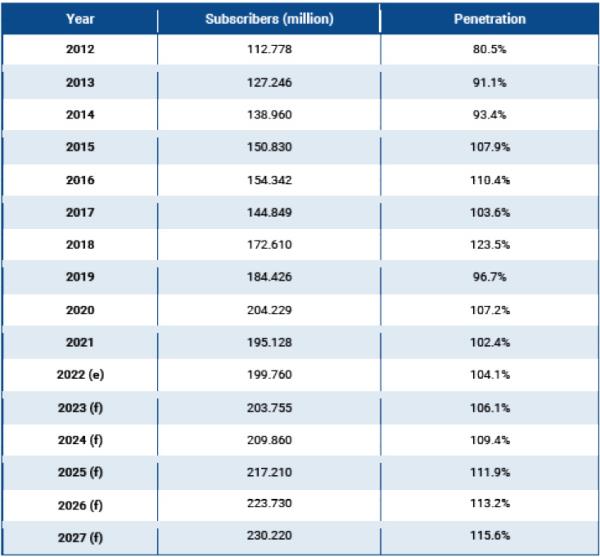07 April 2022

Nigeria has one of the largest telecom markets in Africa, supported by the second largest economy on the continent after South Africa.
Sébastien de Rosbo,
research manager, BuddeComm
In recent years, the telecom sector has benefitted from sympathetic regulatory measures aimed at improving competition and developing infrastructure. This has helped boost the country’s fixed-line broadband sector, which has seen considerable consolidation among players in recent years. The government aims to increase broadband penetration to 70%, largely via mobile networks but also supplemented by satellite connectivity covering remote areas.
Having called on industry players in mid-2020 to contribute towards its 5G framework, the Federal Executive Council in September 2021 approved a 5G policy which should see 5G services covering major urban areas by 2025. This has been supported by the award of spectrum in two bands to MTN Nigeria and Mafab Communications.

Chart 1 – Growth in the number of active mobile subscribers and penetration – 2012 – 2027
Source: BuddeComm based on regulator data

Table 1 – Growth in the number of active mobile subscribers and penetration – 2012 – 2027
Source: BuddeComm based on regulator data. Note: Data relates to active lines
Key developments:
- MTN Group sells down stake in MTN Nigeria to 75.6%;
- Government approves funding for a second satellite, NigComSat 2;
- MTN Nigeria and Mafab Communications each secure 100MHz of TDD spectrum to provide 5G services;
- Airtel Nigeria follows MTN with 5G trials;
- Regulator amends international termination rate;
- Government approves $328 million loan to complete national backbone project;
- Second stage of the NIPTI project is started, focussed on delivering fibre to northern areas of the country;
- Government pledges to deploy 18,000km of fibre to extend broadband to rural areas;
- National Broadband Plan 2020-2025 aiming to deliver 70% broadband penetration;
- Report update includes the regulator’s market data to December 2021, operator data to Q4 2021, updated Telecom Maturity Index charts and analyses, assessment of the global impact of the pandemic on the telecoms sector, recent market developments.






